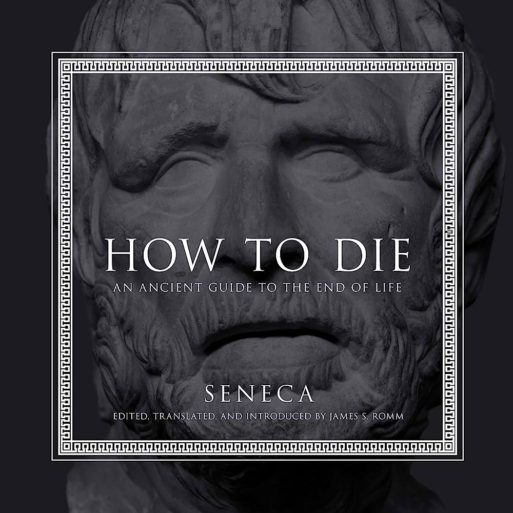 “How To Die: An Ancient Guide to the End of Life” is a compilation of meditations on death and dying by the Roman Stoic philosopher Seneca (c. 4 BC-65 AD). Edited and translated by James S. Romm, the collection reveals that Seneca, who counseled his friend Lucilius to “study death always,” thought of death as life’s most important rite of passage.
“How To Die: An Ancient Guide to the End of Life” is a compilation of meditations on death and dying by the Roman Stoic philosopher Seneca (c. 4 BC-65 AD). Edited and translated by James S. Romm, the collection reveals that Seneca, who counseled his friend Lucilius to “study death always,” thought of death as life’s most important rite of passage.
In his 60s, Seneca wrote his “Moral Epistles,” a collection of letters he wrote to Lucilius, also in his 60s at the time. Romm’s collection opens with excerpts from these letters, where Seneca reveals his belief that “Those who have learned how to die have unlearned how to be slaves.” He writes at great length about preparing for death and practicing non-attachment. “There’s only one chain that holds us in bondage, the love of life. If it can’t be cast off, let it be thus diminished that, if at some point circumstance demands it, nothing will stop or deter us from making ourselves ready to do at once what needs to be done.”
One of the most controversial themes in Stoicism, and in the writings of Seneca, is the idea that suicide is permissible and in some cases favorable. They saw suicide as a valid escape hatch if we are dealing with physical pain, if we are enslaved, or if we are oppressed by vicious rulers and tyrants. In Seneca’s time, Roman emperors had the power to torture and kill subjects. Caligula, whose reign of terror Seneca lived through, was particularly notorious for the ways he humiliated and degraded his opponents or perceived opponents, often prior to executing them. The Stoics believed suicide was a valid method to free oneself from this type of autocratic tyranny. In the end, Seneca himself ended up dying by suicide. He was accused of having a role in the Pisonian conspiracy, a plot to kill the Roman emperor Nero. Seneca was ordered by Nero to take his own life.

James S. Romm
Credit: penguinrandomhouse.ca
Seneca wrote, “A whole lifetime is needed to learn how to live, and — perhaps you’ll find this more surprising — a whole lifetime is needed to learn how to die.”
In the introduction to “How To Die,” editor and translator James S. Romm writes that the passages in the book are chosen from eight prose treatises in which death “looms largest” and showcase Seneca’s attempts to accelerate his own process of learning the lessons necessary to die a good death.
“How To Die: An Ancient Guide to the End of Life” divides Seneca’s writing into five parts: “Prepare Yourself;” “Have No Fear;” “Have No Regrets;” “Set Yourself Free;” and “Become a Part of the Whole.” I appreciated having the excerpts organized like this — it gives the book an emotionally compelling structure, which serves as an effective access point. I enjoyed Seneca’s writings and greatly appreciated the endnotes, which helped flesh out and contextualize certain passages.

 “How To Die: An Ancient Guide to the End of Life” by Seneca, Edited by James S. Romm
“How To Die: An Ancient Guide to the End of Life” by Seneca, Edited by James S. Romm



 Funeral Favors Offer Visitors a Tangible Memento
Funeral Favors Offer Visitors a Tangible Memento
 “Comeback” by Prince
“Comeback” by Prince















